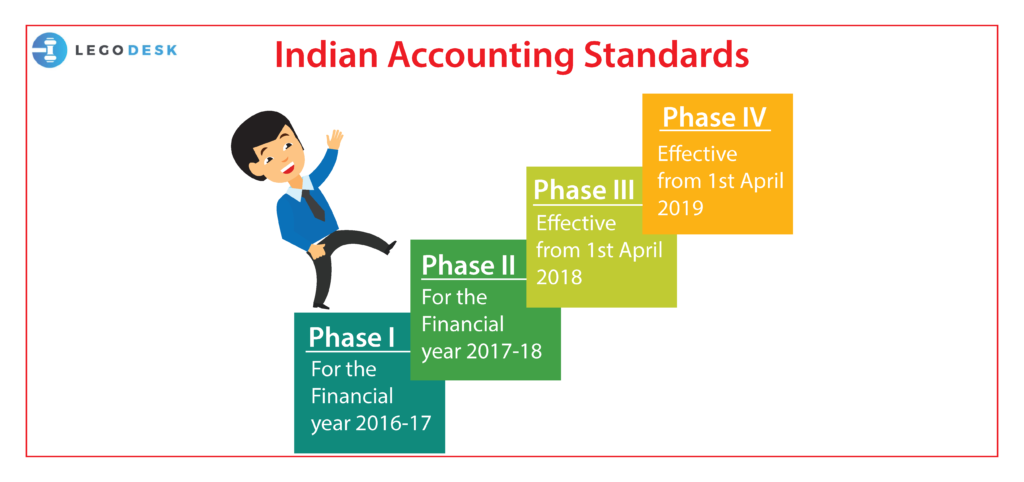IND AS Applicability – Indian Accounting Standards

What is IND AS?
Indian Accounting Standards (AS) can be understood as standards for the IFRS (International Financial Reporting Standards) to ensure that Indian Companies are accessible globally. These standards adopted were made mandatory for certain companies. The main objective is to ensure uniformity in financial statements and reports and to make the same user-accessible and transparent. The regulatory board is the ASB (Accounting Standards Board) formed in 1977. Prior to this, India followed IGAAP (Indian Generally Acceptable Accounting Principle).
Indian AS applicability has been recently updated by the ministry of corporate affairs (MCA) at par with the Companies Indian Accounting Standards (IND AS) Rules 2015. The application of these rules shall be started from the accounting period of 2016-2017. After that three amendments have been brought to the rules namely in 2016, 2017 and 2018. These standards need to be followed by the company and its auditors while making their audit or financial statements.
To Whom these standards are mandatory?
IND AS applicability in India can be understood based on the financial year divided into phases:
Phase I: For the Financial year 2016-17
The companies whose net worth was more than 500 crores had to report as per the Ind AS. The Holding, subsidiary, joint venture or associate of the above companies is also required to follow these standards.
Phase II: For the Financial year 2017-18
The unlisted companies whose net worth was more than 250 crores or more (but not less 500 crores. This shall be applicable to all the listed companies. The Holding, subsidiary, joint venture or associate of the above companies is also required to follow these standards. Also, for the companies whose equity or debt securities are listed on the stock markets in India or outside India.
Phase III: Effective from 1st April 2018
IND AS is applicable to all banks, Insurance companies and also to the Non-banking Financial institutions. The net worth of the company should be either more or equal to Rs. 500 crores. The IND AS for Banks and the insurance company will be different which shall be notified by the IRDA (Insurance Regulatory and Development Authority). Net worth shall be calculated for the past four financial years.
Phase IV
For all the NBFCs which have a net worth of equal to or more than Rs. 250 crores but less than Rs. 500 crores, the IND AS shall be applicable. The net worth shall be calculated on the basis of the past three financial years i.e. 2017-28, 2016-17 and 2015-16.
For the applicability of IND AS, an NBFC is that which is defined under section 45-I-f of the Reserve Bank of India Act, 1934.
NOTE:
- A company can voluntarily follow the IND AS. However in case a company has started to follow the IND AS, then it must abide with it consistently. There is no opting out of following these standards whether taken up voluntarily or mandatorily.
- The standards shall be applicable to all financial statements i.e. Standalone and consolidated.
- As per the clarification issued by the SEBI for the issuer companies whose offer documents are filed with SEBI, demands declaration of the financial statement for 5 previous years preceding the year of filing.
- The companies on which the IND AS is not applicable shall abide by the rules and standards mentioned in Companies (Accounting Standards) Rules, 2006.
- For the application of the standards, both calculating net-worth and listing of the companies are mandatory.
Calculation of the net worth
Net worth shall have the same meaning as defined under section 2(57) of the Companies Act, 2013.
Net worth = (Total paid-up share capital + reserves out of profit + securities premium account) – (accumulated losses + expenditure + miscellaneous expenditures which are written off).
Net worth shall be calculated from the first audited financial statement.
Some important IND AS
The IND AS are total 41 in number which is not numbered serially. IND AS 1 deal with the Presentation of Financial Statements. IND AS 12 is about income tax, IND AS 17 is about a lease. Employee benefits are specified in IND AS 19. The other important aspects covered are Earning per share, inventories, agriculture, intangible assets, joint agreement, etc.
Try our Debt Resolution solutions today Request a Demo